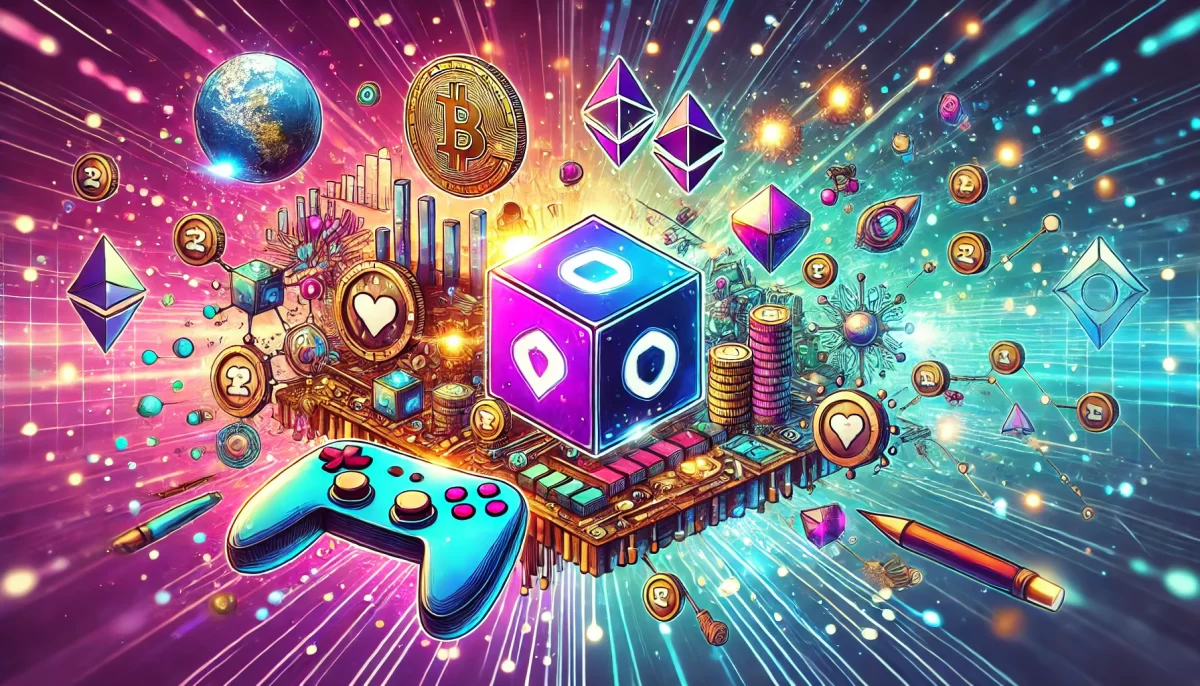# The Rise and Decline of GameFi: Legacy and Native Approaches Under Scrutiny
In the 2020 crypto cycle, GameFi emerged as a significant sector with projects like The Sandbox (SAND), Decentraland (MANA), and Axie Infinity (AXS). These Play-to-Earn (P2E) games gained notoriety even in regions where P2E gaming faced bans, like South Korea. The fusion of blockchain and gaming, driven by the critical market requirement of usage, promised a successful combination, capturing investor attention.
A spectrum of projects, ranging from AAA-grade games to casual games, were launched as corporations and startups ventured into the GameFi market with various X2E (eXperience-to-Earn) models. However, following a peak in 2020, successful and noteworthy GameFi launches dwindled.
## Legacy vs. Native GameFi: Different Strategies, Shared Challenges
GameFi projects can be divided into two categories: those integrating blockchain into existing games (Legacy approach) and those developing games on blockchain from the ground up (Native approach). Established gaming companies often adopt the Legacy approach, adding blockchain components to their high-quality AAA games. Conversely, Web3 companies and smaller firms lean towards the Native approach, embedding blockchain technology, tokenomics, NFTs, and airdrops from the design phase.
Both approaches thrived during the crypto bull market but revealed distinct limitations during the downturn.
### The Legacy Approach: A Complex Triangular Collaboration
The Legacy method involves a three-way synergy among publishers, game developers, and token foundations. Publishers decide which games will incorporate blockchain technology, guiding development in collaboration with the token foundations.
However, a fundamental misalignment exists: while both game developers and token foundations aim for game success, developers prioritize in-app revenue, focusing on game design, user acquisition, and revenue generation. Conversely, token foundations concentrate on increasing blockchain-based transactions and integrating tokens into game economies.
Developers fear that incorporating blockchain elements might disrupt their business models. Without assurances of increased success, the risk involved in integrating blockchain is significant, creating a major hurdle for the Legacy approach in Web3 game development.
### The Native Approach: High Costs and Resource Constraints
Native GameFi faces simpler yet profound challenges. Token project funds, typically allocated for token development and operations, must cover game development and operational costs. With AAA game development costing billions, this financial barrier is daunting. Furthermore, combining game and tokenomic success requires extensive know-how and resources, often lacking in smaller projects.
Adding blockchain to games introduces complexities like transactional fees, wallets, and NFTs, lowering accessibility and competitive edge.
## Blockchain’s Strain on Game Ecosystems
According to a Steam survey, only 30 percent of games generate over $1,000, and just 20 percent surpass $5,000. Given these tough odds, the success rate for commercial games is less than 10 percent. GameFi projects, compelled to succeed in both the game and token realms, face even tougher odds.
Blockchain integration disrupts the natural cycle of game development. Unsuccessful games can typically be retired, but blockchain’s immutable ownership—tied to tokens and NFTs—means even a single game failure impacts the entire tokenomics chain. The permanence imposed by blockchain makes launching new games riskier and stifles bold innovation.
## Emerging Trends: MaplestoryN and Hamster Kombat
Faced with these challenges, new GameFi trends are emerging. Legacy and Native models are adapting, as seen with MaplestoryN and Hamster Kombat.
MaplestoryN, developed by Nexpace—a subsidiary of Nexon—leverages the popular Maplestory IP. By housing both game development and token foundation under one roof, Nexpace aims to fine-tune tokenomics and in-game economies. An interview with Nexpace revealed plans to shift item issuance to users via tokens and enhance UI/UX to mitigate blockchain-induced delays and inconveniences.
Although the success of MaplestoryN remains to be seen, the project’s design considerations suggest a thoughtful approach to overcoming Legacy GameFi limitations, with its strong IP and economic structuring expertise.
Hamster Kombat, on the other hand, addresses Native model issues with a bottom-up approach. Built on Telegram’s TON blockchain, Hamster Kombat enjoys high accessibility with 900 million MAU and easy user acquisition through its extensive follower base. The casual game’s simplicity aligns well with current mobile game trends focused on engaging business models and fun.
By emphasizing casual, easy-to-develop games with established engagement models and lower costs, Hamster Kombat provides a viable pathway for indie developers and small projects.
## The Future of GameFi
Blockchain and gaming form an inherently attractive market synergy, offering intuitive value through tokenomics within game economies. Despite initial setbacks, GameFi holds considerable potential. The sector’s growth could lead to a broader blockchain adoption, enhancing user experiences through the integration of NFTs and tokens.
As GameFi evolves, it continues to promise substantial benefits for gamers and could play a crucial role in the mass adoption of blockchain technology.
Park Hyun-jae, Block Media LinkedIn
⚠ Premium content
To unlock this and other premium content, subscribe via Access Protocol. Learn more ›




